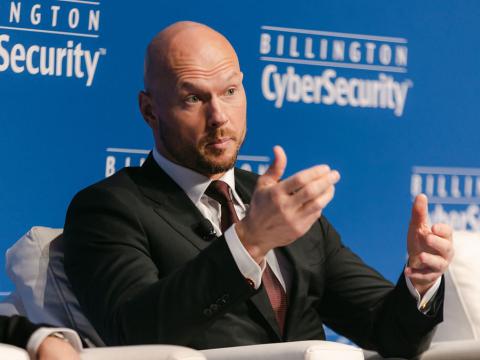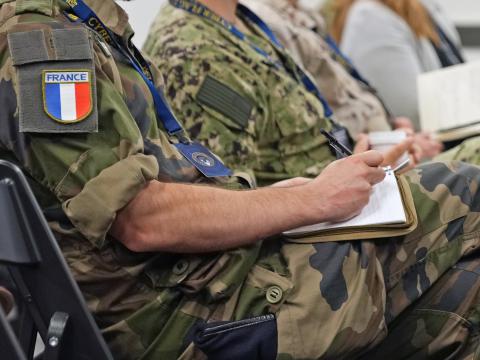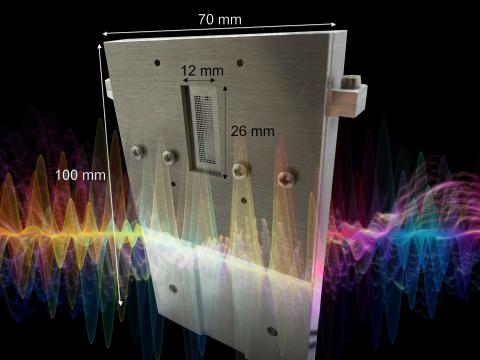Secure Cellular System Serves Warriors and Rescuers
Deployable technology allows instant networks in disaster areas, battlefields.
A telecommunications system that connects military and commercial radios and telephones into a single encrypted network is enabling warfighters and first responders to communicate securely with each other. Based on commercial technologies, the compact, portable solution establishes a cellular network that can support both military and disaster recovery operations.
Both manmade and natural catastrophes wreak havoc with local telecommunications grids, which are either overwhelmed or destroyed. First responders must bring in and quickly establish communications to coordinate relief operations effectively. Military forces operating overseas also must create secure networks to connect small tactical units with local and theater headquarters.
MobileNet is a rapidly deployable communications system designed to provide encrypted mobile cellular voice, facsimile and data messaging for military and homeland security operations. Developed by Tadiran Communications Limited,
Yariv explains that MobileNet was developed as a redundant, autonomous cellular system for specific situational needs. He notes that a common consequence of terrorist attacks in
Military forces around the world also need mobile cellular systems, especially for logistics operations, Yariv states. For example, many nations conduct overseas coalition operations, and their forces require a logistics backhaul capacity to maintain communications links. He observes that countries often want to bring their own cellular networks overseas for autonomy and security. MobileNet provides these capabilities, he says.
Secure communications is vital for military and government users. MobileNet features a security system called Snapshield designed to encrypt voice and data transmissions across existing cellular and landline connections. Yariv notes that many militaries worldwide use unsecured commercial cellular networks for their communications. “You won’t believe how much supposedly secure information is being transferred over these lines. People are not aware of being peeped [monitored], and they’re talking about things they’re not supposed to talk about on the phone. As much as you can talk about discipline, it’s a problem,” he maintains.
Security over landline and cellular networks also remains an issue for civilian government and commercial users. Yariv says that commercial espionage is another concern for businesses because most people are unaware that cell phone transmissions can be monitored easily.
Snapshield counters eavesdropping by encrypting voice data for cellular and wired users. For example, the employees in a company or government agency can fit a small box into a telephone jack to allow secure communications with similarly equipped landline telephones and cell phones.
To interoperate with older types of cell phones, the Snapshield system contains a similar encryption product that attaches to the lower part of the handset. MobileNet also enables secure transmission via software for the current generation of personal digital assistants and smart cell phones. Yariv notes that the encryption box is designed to operate with Ericsson cell phones primarily, and he adds that Tadiran is working with Sony Ericsson to provide additional secure voice and data capabilities for their wireless products. “Once we got to the world of pure software, the connector type was less of an issue. So if customers have a specific phone that they want to integrate, it’s not mechanical anymore; it’s software only, which makes it much easier,” he says. MobileNet combines these hardware- and software-based security solutions, allowing users to choose between both features.
Yariv explains that MobileNet is an autonomous cellular communications network consisting of one to many cells. It can connect to existing wired ground communications networks such as public access telephone switches or to other cellular providers that share roaming capabilities with the system. “It depends only on integration with the specific local provider,” he adds.
The system’s hardware consists of lightweight portable cellular base stations and masts that can be transported by truck or helicopter. MobileNet is designed as a flyaway system that can be quickly set up and connected to a power source. Yariv observes that it can be used for two types of applications: either as a stand-alone site providing connectivity to users within several miles of a base station or as a gateway to a satellite or fiber optic communications link. “Then you’re connected to a backbone that opens your connectivity to the wide world,” he says.
Although the system can stand alone, it also can work with other ground, mobile or military communications systems. MobileNet uses standard interfaces to link with military or commercial equipment and networks. This capability allows the network to be set up within an hour. However, Yariv explains that it can be made ready to interoperate with specific types of equipment or networks encountered in the field. If a base station has been prepared in this fashion, he claims that setup can be accomplished within 30 minutes.
The system currently carries mainly voice, facsimile and low-bandwidth data transmissions, Yariv says. He notes that Tadiran plans to migrate MobileNet to an Internet protocol-based transmission regime supporting higher bandwidth communications.
MobileNet became available this year. Yariv shares that the
Tadiran also has a suite of homeland security products that integrate with MobileNet. These include the Crisis Management Software application, which operates as a system of systems to provide first responders with situational awareness. Yariv explains that the software incorporates many lessons learned from
The firm also supplies Unicom, another system of systems designed to serve as a core application connecting a variety of legacy communications equipment into a single network. Yariv notes that during the September 11, 2001, terrorist attacks in the
For the military community, Tadiran developed the Integrated Radio Communication System (IRCS), which enables interoperability for tactical communications equipment. Yariv states that the continued use of multiple legacy waveforms and radios is one of the reasons that the U.S. Army is moving to the Joint Tactical Radio System (JTRS). “It’s endless, and every system, every army, every corps, every unit has a different radio. Part of the idea of JTRS was to give them the capability to talk to one another,” he says.
The IRCS allows legacy radios to communicate with each other by creating a common VoIP core. This interconnectivity permits users to link a variety of systems. For example, a telephone conference can be conducted via telephone and high frequency and ultrahigh frequency radio links or through an Internet protocol software telephone built into a personal computer. “A general sitting in his office with nothing but a personal computer can use it as a soft phone to talk to a ship 10,000 miles away. He doesn’t have to be aware of all the communications equipment in between. He can dial the number of that ship and talk to it from his office,” he says.
Web Resource
Tadiran Communications Limited: www.tadcomm.com



